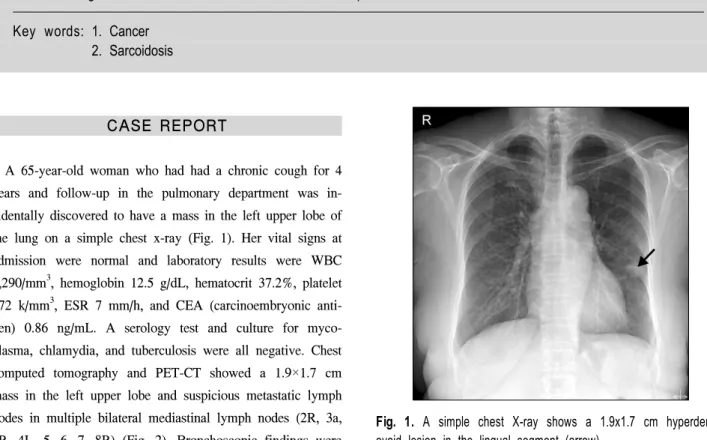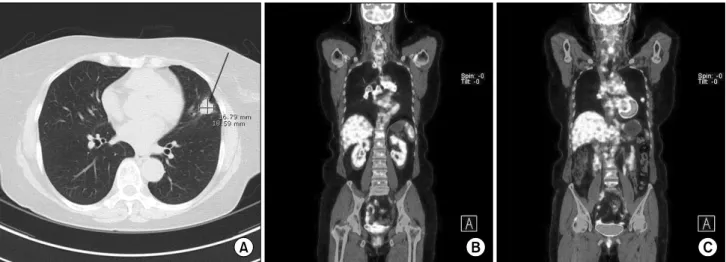Korean J Thorac Cardiovasc Surg 2011;44:301-303 □ Case Report □ DOI:10.5090/kjtcs.2011.44.4.301 ISSN: 2233-601X (Print) ISSN: 2093-6516 (Online)
− 301 −
*Department of Thoracic and Cardiovascular Surgery, St. Mary’s Hospital, Catholic Cancer Center, College of Medicine, The Catholic University of Korea
Received: November 18, 2010, Revised: May 19, 2011, Accepted: May 31, 2011
Corresponding author: Jae-Kil Park, Department of Thoracic and Cardiovascular Surgery, St. Mary’s Hospital, Catholic Cancer Center, College of Medicine, The Catholic University of Korea, 505, Banpo-dong, Seocho-gu, Seoul 137-040, Korea
(Tel) 82-2-2258-2858 (Fax) 82-2-594-8644 (E-mail) jaekpark@catholic.ac.kr
C
The Korean Society for Thoracic and Cardiovascular Surgery. 2011. All right reserved.
CC

